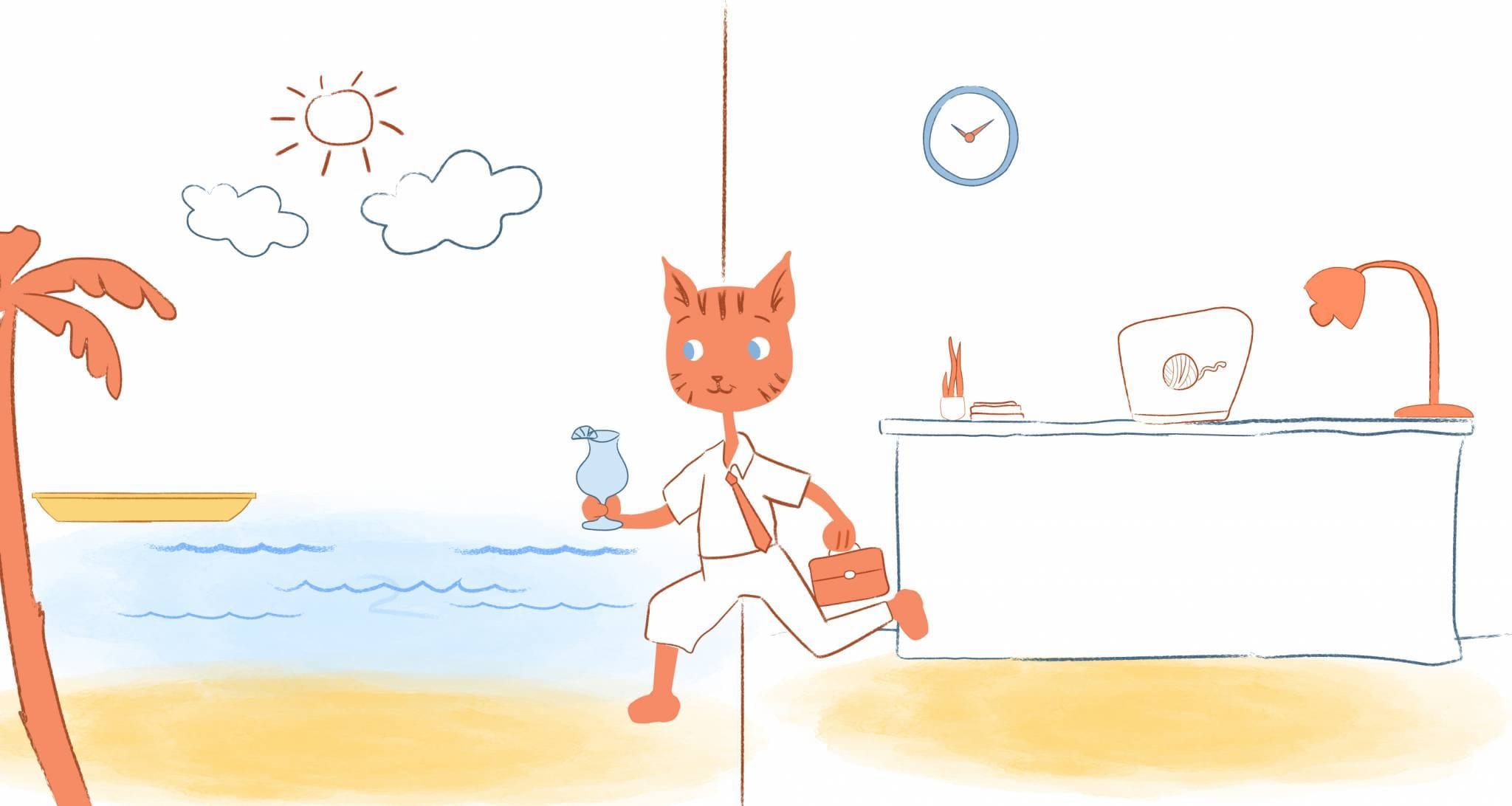

Growing up surrounded by technology, Millennials and Zoomers take for granted how intimidating and overwhelming this can be for different generations. Case in my point, my father. I’m not sneering here — but he’s a Boomer and still has trouble navigating his smartphone — he can barely store new contacts.
Over the years, I have literally sat next to him and given him step-by-instructions — the same ones — over and over. He still misuses his phone. Eventually, he just ignores my feedback and gives me the briefest of cold shoulders.
Initially, I took his actions way too personally. Here I was trying to help him and this was his reaction? Not cool.
The thing is, after some time, I could empathize with my old man. I’ve also been frustrated or standoffish when someone has offered advice or feedback. My guess is that we all have felt a little threatened under the correction and instruction of others.
But don’t just take my word on this. Research has backed this claim up—specifically, the work of neuroscientist Dr. David Rock and his SCARF model.
What is the SCARF model?
Back in 2008, Dr. Rock, who I think has one of the coolest names ever, published the paper “SCARF: A Brain-Based Model for Collaborating With and Influencing Others.” In it, he outlines the five key “domains” that influence our behavior in social situations.
- Status — our relative importance to others.
- Certainty — our concerns about predicting the future.
- Autonomy — a sense of control over events.
- Relatedness — how safe we feel when around others.
- Fairness — the perception of fairness between people.
Dr. Rock just didn’t grab this out of thin air. He based his research on previous neuroscience research to come to the following themes.
“Firstly, that much of our motivation driving social behavior is governed by an overarching organizing principle of minimizing threat and maximizing reward,” he wrote. “Secondly, that several domains of social experience draw upon the same brain networks to maximize reward and minimize threat as the brain networks used for primary survival needs.”
“In other words, social needs are treated in much the same way in the brain as the need for food and water,” he clarifies. “The SCARF model summarizes these two themes within a framework that captures the common factors that can activate a reward or threat response in social situations.”
Additionally, the SCARF model “can be applied (and tested) in any situation where people collaborate in groups.” Social events, family gatherings, education environments, and all workplace settings are all fair game.
How the SCARF model affects the workplace.
Confused? Don’t be. The main takeaway is that the foundation of this model is all about minimizing threats and maximizing rewards.
For example, you weren’t invited to a team meeting or after-hours event. You might view that as a threat to your status and relatedness. As a result, that might can stimulate the part of the brain where physical pain resides.
When you receive negative feedback, like customer reviews or the mistakes you’ve made, that releases cortisol, aka the “stress hormone.” By responding to this threat, your survival response is triggered. As a consequence, this can:
- Speed up your heart rate and increase blood pressure.
- You’re tenser and on edge.
- Decrease creativity and focus.
- Reduce the ability to solve problems.
- Make it more difficult to communicate and collaborate.
On the flip side, when you feel rewarded, like being acknowledged and celebrated for your work, your brain releases dopamine, aka the “happy hormone.” In turn, this increases blood flow to the brain. And, when this occurs, you’ll be more creative, focused, and receptive to fresh insights and ideas.
Also, because you’re floating on top of cloud 9, you’ll want to be rewarded again. So, this motivates you to keep putting your best foot forward.
How to use the SCARF model.
Overall, the SCARF model can be used to collaborate, engage, and influence others. But, to make that possible, let’s explore how you can use each domain of the model.
Status
“Status is about relative importance, ‘pecking order’ and seniority,” writes Dr. Rock. “Humans hold a representation of status in relation to others when in conversations, and this affects mental processes in many ways.” For instance, when you win a game, you feel better than your opponents, which in turn increases dopamine levels.
As a leader, you can maximize rewards through regular paise and celebrating wins — regardless of how big or small. You can also give them a chance to voice their opinions and learn new skills.
To eliminate threats, never take credit for their hard work or dismiss their ideas. Furthermore, you may want to skip the performance reviews and let them evaluate their own performance.
Certainty
Since the brain is a “pattern-recognition machine,” it craves certainty. “Without prediction, the brain must use dramatically more resources, involving the more energy-intensive prefrontal cortex, to process moment-to-moment experience,” adds Rock. In fact, even the slightest hint of uncertainty can generate “an ‘error’ response in the orbital frontal cortex.”
Why’s that a problem? When this occurs, it diverts our attention away from our goals. And, we’re more focused on correcting the error.
How leaders provide certainty in an uncertain world? Well, here are some top suggestions;
- Establish crystal clear guidelines and expectations.
- Break down larger goals or projects into smaller, more manageable chunks.
- Agree on desirable deadlines and outcomes with the entire team.
- Create an agenda, so that meeting attendees know what to expect.
- Be transparent and share relevant information.
- Set boundaries by having consistent operating hours.
When change does inevitably happen, you can manage it and reduce threats by;
- Declaring your vision change.
- Follow the “3 C’s,” which are communicate, collaborate, and commit.
- Identify your All-Stars and get them on board.
- Keep stress at a minimum and boost morale by celebrating milestones.
- Reduce change fatigue by building trust and making sure everyone has a sense of belonging.
- Follow through with your plans, but be flexible.
- Measure and analyze metrics and KPIs to see if you’ve reached your goals.
Autonomy
“Autonomy is the perception of exerting control over one’s environment; a sensation of having choices,” explains Rock. The less autonomy we have, the more a situation is perceived as a threat. When we feel like we have control, this activates the reward structures of the brain.
In order to minimize threats, encourage ownership among your team. When you do, this will tap into their intrinsic motivation. And, you can accomplish this by;
- Encourage your team members to ask questions and express their opinions.
- Let your team members chose how they’ll complete a task or solve a problem.
- Permit flexible schedules.
- Learn how to delegate effectively.
- Provide constructive feedback.
- Let them show off their strengths and talents.
- Make sure that they always have the right tools and resources.
- Build trust by not micromanaging your team.
- Use mistakes as learning opportunities.
Relatedness
“Relatedness involves deciding whether others are ‘in’ or ‘out’ of a social group,” Rock states. It’s also “a driver of behavior in many types of teams, from sports teams to organizational silos: people naturally like to form ‘tribes’ where they experience a sense of belonging.”
In short, we want to be a part of a group. When we have this sense of belonging, this releases oxytocin. When we don’t, this can block empathy and diminish creativity.
The answer to encouraging relatedness? Creating a connected culture. You can do this through team-building activities, scheduling one-on-ones, or having team lunches. Other recommendations would be making them feel psychologically safe, providing mentorship opportunities, and showing gratitude.
Fairness
Lastly, we prefer a sense of equity and equality in group settings. When we’re faced with an injustice, this sets off a strong threat response. In fact, this might make us feel disgusted.
To promote fairness, always be transparent when making decisions. For example, a team member was promoted because they have exceeded expectations, like surpassing a sales quota or obtaining a certificate. Moreover, you must practice diversity and inclusion.
Autonomy, celebrating accomplishments, and having a culture built on shared values all can achieve this as well. And, always treat everyone with the same level of respect. For example, if you planned to meet an employee for lunch at noon, don’t arrive at 12:30.
Image Credit: ron lach; pexels; thank you!











John Rampton
John’s goal in life is to make people’s lives much more productive. Upping productivity allows us to spend more time doing the things we enjoy most. John was recently recognized by Entrepreneur Magazine as being one of the top marketers in the World. John is co-founder and CEO of Calendar.